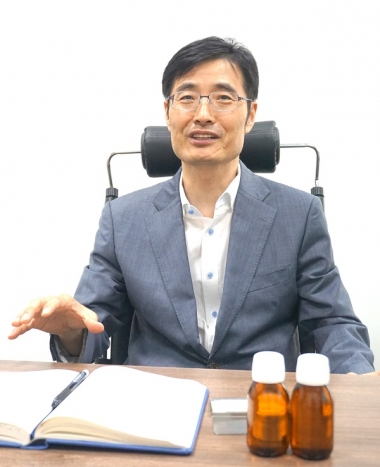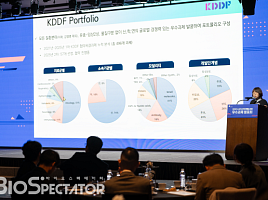기사본문
Yoo’s Biopharm Develops New Oral Drug for AMD
입력 2018-08-21 10:16 수정 2018-09-03 10:39
by Jongwon Jang

Yoo’s Biopharm currently employs the UDCA as a source material for therapeutic agents that are applicable to diverse kinds of rare and intractable diseases. Pre-clinical trial of the front-end pipeline of ‘YSB-201’ is currently in progress for the development of a therapeutic agent for age-related macular degeneration (AMD).
Ursodeoxycholic acid (UDCA) is a kind of bile acid that is an essential substance of internal bile. Its function of dissolving cholesterol gallstone to be discharged thereby has been known; it was approved by the FDA in 1988 as a therapeutic agent for primary biliary cirrhosis. The hydrophilic and atoxic properties of UDCA are known to competitively suppress the hydrophobic and toxic properties of the absorption of bile acid, to prevent damage to cell organelles.
President Song of Yoo’s Biopharm commented, “… UDCA is a material for which over 5,000 research efforts have been carried out. The functions of UDCA, identified through previous studies, include those of anti-apoptosis, anti-oxidative effect, anti-inflammatory effect, and cytoprotection.”
However, the UDCA, having crystal form of a combination of hydrophilic parts, coagulates spontaneously on dissolution in water, and thereby forms a structure of micelle. Due to its physicochemical properties of being unable to exist in the form of single molecular that enables pharmacological action, and its characteristic as a material of enterohepatic circulation, the UDCA has been unable to be employed for the development of a new drug.
The platform technology of Yoo’s Biopharm enables the production of UDCA in the form of high-concentration solution, wherein the UDCA of single molecular form, different from the crystal form of conventional UDCA, is dissolved therein. The solubilized UDCA is absorbed faster than the UDCA in crystal form; it can be absorbed even in the stomach, as well as in the small intestines; thereby, it can move to other internal organs through the blood.
The company designed an experiment on the human body with a single oral medication of 500 mg of UDCA, which was prepared in respective forms to compare the respective degrees of absorption, and found that the solubilized UDCA rendered a maximum concentration in blood (Cmax) that was 7 times higher than that of the UDCA of conventional form, with a time to reach maximum concentration in blood that was 4 times faster than that of conventional UDCA.
Yoo’s Biopharm also identified the suppression of the manifestation of p53 protein that induces apoptosis by the solubilized UDCA, likewise the UDCA of conventional formulation, through the experiment on cells. In addition, the survival of cells in both cases of the treatment of Cisplatin to cell strain, and the treatment of Cisplatin to cell strain with UDCA, were compared with each other, to determine the cell protective function, from which the significant suppression of apoptosis and the protection of cells were observed.
Based on the cell protection properties and anti-inflammatory mechanism of UDCA, Yoo’s Biopharm has developed a therapeutic agent for the diseases to which the therapeutic agent for wet macular degeneration would be efficacious.
President Song commented, “… as there is a blood-brain barrier in the brain, a blood-retinal barrier also exists in the eye. This is because the choroid of eye consists of 4 times as many blood vessels as those in the kidneys. Thereby, the development of an oral drug, which is easily transferable to the inside of the eyeball through the blood-retinal barrier, would be extremely difficult…” He also emphasized that, “… however, it was identified that the water soluble UDCA, which resulted from our developmental project YSB-201, remained in the eyeball, as well as in the blood plasma at the level of concentration of decades of µM, from the measurement of concentration in the targeted eyeball and in the blood plasma, after the oral medication of the mouse animal model.
Yoo’s Biopharm observed the effects of oral administration of YSB-201 from the animal model of macular degeneration, and found an excessive manifestation of VEGF and suppression of the creation of new blood vessels in choroid that could result in the protection of retinal cells, and restoration of retinal function.
President Song commented further, “… for the case of macular degeneration, being classified as rare disease, it will enable us to enter into market after the phase 2 clinical trial through conditional approval…”; “… we are currently designing for the pre-clinical trial and phase 1 clinical trial to present the protocol for the phase 1 clinical trial to be held in the second half of next year.”







